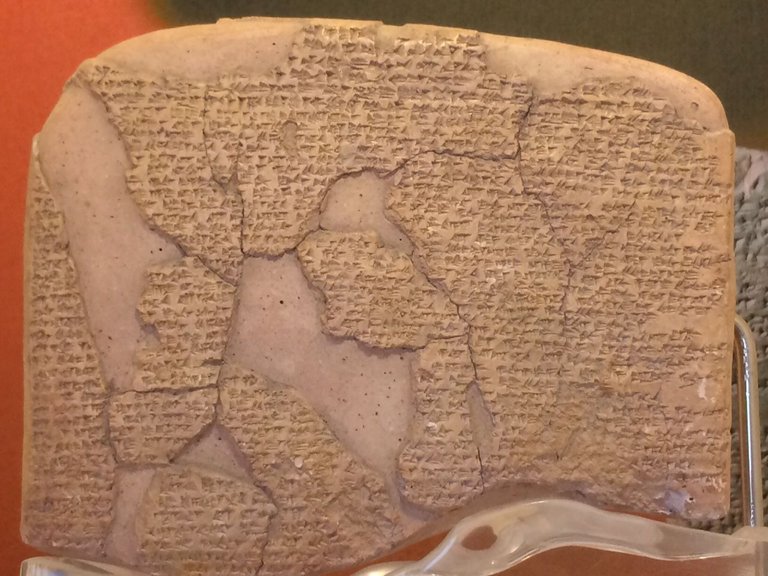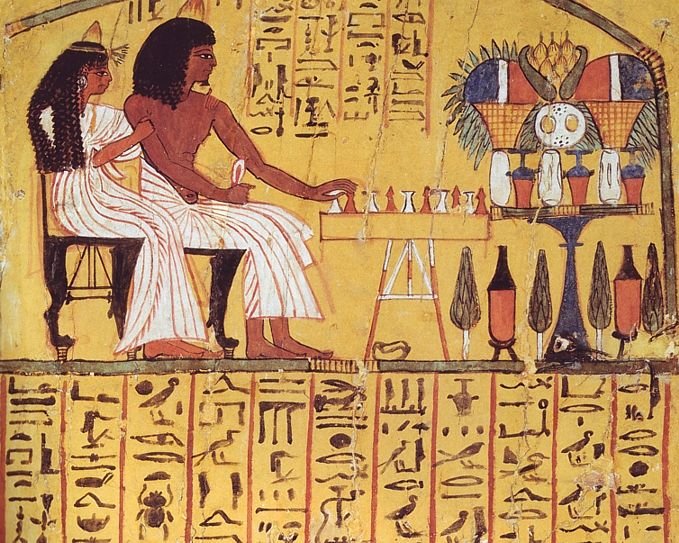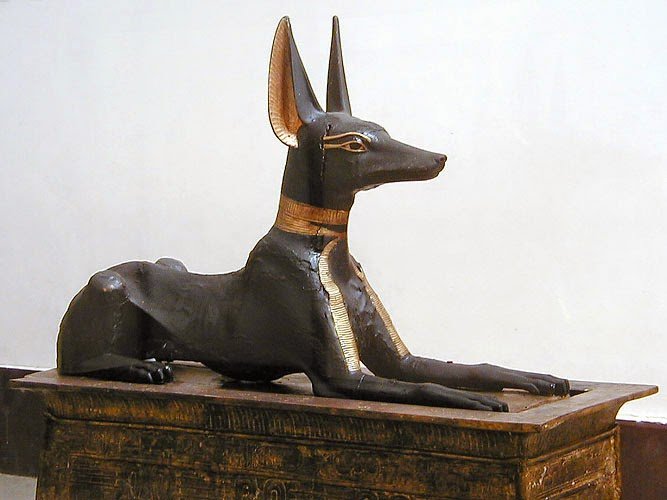
Old Egypt remained as one of the world's most progressive civic establishments for about 3,000 years and made a culture so rich that it has brought forth its own field of study. In any case, while Egyptian workmanship, design and entombment strategies have turned out to be continuing objects of interest, there is still a great deal you most likely don't think about these famous manufacturers of the pyramids. From the soonest recorded peace settlement to antiquated tabletop games, discover 11 astounding certainties about the Gift of the Nile.
1-Cleopatra was not Egyptian:

Alongside King Tut, maybe no figure is more broadly connected with old Egypt than Cleopatra VII. In any case, while she was conceived in Alexandria, Cleopatra was very of a long line of Greek Macedonians initially dropped from Ptolemy I, one of Alexander the Great's most put stock in lieutenants. The Ptolemaic Dynasty ruled Egypt from 323 to 30 B.C., and the vast majority of its pioneers remained to a great extent Greek in their way of life and sensibilities. Truth be told, Cleopatra was well known for being one of the main individuals from the Ptolemaic tradition to really talk the Egyptian dialect.
2-The old Egyptians manufactured one of the most punctual peace settlements on record.

For more than two centuries the Egyptians battled against the Hittite Empire for control of grounds in cutting edge Syria. The contention offered ascend to wicked engagements like 1274 B.C's. Battle of Kadesh, however by time of the pharaoh Ramses II neither one of the sides had risen as a reasonable victor. With both the Egyptians and Hittites confronting dangers from different people groups, in 1259 B.C. Ramses II and the Hittite King Hattusili III arranged a well known peace bargain. This assention finished the contention and declared that the two kingdoms would help each other in case of an attack by an outsider. The Egyptian-Hittite bargain is presently perceived as one of the most punctual surviving peace agrees, and a duplicate can even be seen over the passage to the United Nations Security Council Chamber in New York.
3-Ancient Egyptians cherished table games.

Following a monotonous day's worth of effort along the Nile River, Egyptians frequently casual by playing prepackaged games. A few unique recreations were played, including "Mehen" and "Canines and Jackals," however maybe the most prevalent was a session of chance known as "Senet." This distraction goes back similarly as 3500 B.C. furthermore, was played on a long board painted with 30 squares. Every player had an arrangement of pieces that were moved along the board as indicated by moves of dice or the tossing sticks. Students of history still level headed discussion Senet's correct standards, yet there is little uncertainty of the amusement's fame. Works of art delineate Queen Nefertari playing Senet, and pharaohs like Tutankhamen even had amusement sheets covered with them in their tombs.
4-Egyptian ladies had an extensive variety of rights and opportunities.

While they may have been openly and socially seen as mediocre compared to men, Egyptian ladies delighted in a lot of legitimate and monetary freedom. They could purchase and offer property, serve on juries, make wills and even go into legitimate contracts. Egyptian ladies did not ordinarily work outside the home, but rather the individuals who did typically got equivalent pay for doing likewise employments as men. Not at all like the ladies of antiquated Greece, who were viably claimed by their spouses, Egyptian ladies additionally had the privilege to separate and remarry. Egyptian couples were even known to arrange an old prenuptial understanding. These agreements recorded all the property and riches the lady had brought into the marriage and ensured that she would be made up for it in case of a separation.
5-Egyptian specialists were known to sort out work strikes.

Despite the fact that they viewed the pharaoh as a sort of living god, Egyptian laborers were not reluctant to challenge for better working conditions. The most renowned illustration came in the twelfth century B.C. amid the rule of the New Kingdom pharaoh Ramses III. At the point when workers occupied with building the imperial necropolis at Deir el-Medina did not get their typical installment of grain, they sorted out one of the primary recorded strikes ever. The dissent appeared as a sit-in: The laborers basically entered adjacent funeral home sanctuaries and declined to leave until the point that their grievances were heard. The bet worked, and the workers were inevitably given their late proportions.
6-Egyptian pharaohs were regularly overweight.

Egyptian workmanship generally delineates pharaohs as being trim and statuesque, yet this was probably not the situation. The Egyptian eating routine of brew, wine, bread and nectar was high in sugar, and studies demonstrate that it might have decimated regal waistlines. Examinations of mummies have shown that numerous Egyptian rulers were unfortunate and overweight, and even experienced diabetes. An outstanding case is the unbelievable Queen Hatshepsut, who lived in the fifteenth century B.C. While her sarcophagus portrays her as slim and athletic, students of history trust she was really corpulent and thinning up top.
7-The pyramids were not worked by slaves.

The life of a pyramid developer unquestionably wasn't simple—skeletons of specialists generally hint at joint inflammation and different diseases—yet confirm recommends that the huge tombs were fabricated not by slaves but rather by paid workers. These antiquated development laborers were a blend of talented craftsmans and impermanent hands, and some seem to have taken incredible pride in their art. Spray painting found close to the landmarks proposes they frequently appointed diverting names to their teams like the "Alcoholics of Menkaure" or the "Companions of Khufu." The possibility that slaves assembled the pyramids at the split of a whip was first invoked by the Greek student of history Herodotus in the fifth century B.C., yet most antiquarians now expel it as myth. While the antiquated Egyptians were positively not opposed to keeping slaves, they seem to have for the most part utilized them as field hands and local workers.
8-King Tut may have been slaughtered by a hippopotamus.

Shockingly little is thought about the life of the kid pharaoh Tutankhamen, yet a few antiquarians trust they know how he kicked the bucket. Sweeps of the youthful lord's body demonstrate that he was treated without his heart or his chest divider. This intense takeoff from customary Egyptian internment hone recommends that he may have endured awful damage preceding his demise. As indicated by a modest bunch of Egyptologists, a standout amongst the in all likelihood foundations for this injury would have been a nibble from a hippopotamus. Confirmation shows that the Egyptians chased the monsters for game, and statues found in King Tut's tomb even portray him in the demonstration of tossing a spear. In the event that the kid pharaoh was in fact enamored with stalking unsafe diversion, at that point his demise may have been the aftereffect of a chase turned out badly.
9-Some Egyptian specialists had particular fields of study.
.jpg)
An old doctor was generally a handyman, yet prove demonstrates that Egyptian specialists now and again centered around mending just a single piece of the human body. This early type of restorative specialization was first noted in 450 B.C. by the voyager and antiquarian Herodotus. Talking about Egyptian prescription, he stated, "Every doctor is a healer of one infection and not any more… a portion of the eye, a portion of the teeth, some of what relates to the paunch." These authorities even had particular names. Dental practitioners were known as "specialists of the tooth," while the term for proctologists actually means "shepherd of the butt."
10-Egyptians kept numerous creatures as pets.

The Egyptians considered creatures to be incarnations of the divine beings and were one of the primary civic establishments to keep family pets. Egyptians were especially partial to felines, which were related with the goddess Bastet, however they additionally had a love for birds of prey, ibises, canines, lions and primates. A significant number of these creatures held an exceptional place in the Egyptian home, and they were frequently embalmed and covered with their proprietors after they kicked the bucket. Different animals were exceptionally prepared to fill in as partner creatures. Egyptian cops, for instance, were known to utilize mutts and even prepared monkeys to help them when out on watch.
11-Egyptians of both genders wore cosmetics.

Vanity is as old as human progress, and the old Egyptians were no exemption. The two men and ladies were known to wear overflowing measures of cosmetics, which they accepted gave them the assurance of the divine beings Horus and Ra. These beauty care products were made by crushing metals like malachite and galena into a substance called kohl. It was then generously connected around the eyes with utensils made out of wood, bone and ivory. Ladies would likewise recolor their cheeks with red paint and utilize henna to shading their hands and fingernails, and both genders wore scents produced using oil, myrrh and cinnamon. The Egyptians trusted their cosmetics had enchanted mending forces, and they weren't altogether wrong: Research has demonstrated that the toxic beautifying agents worn along the Nile really helped fight off eye diseases.
Sources of images:
http://tiny.cc/rk7bny
http://tiny.cc/3l7bny
http://tiny.cc/1o7bny
http://tiny.cc/qp7bny
http://tiny.cc/3r7bny
http://tiny.cc/lt7bny
http://tiny.cc/7t7bny
http://tiny.cc/tv7bny
http://tiny.cc/ax7bny
http://tiny.cc/jy7bny
http://tiny.cc/i07bny
http://tiny.cc/717bny
Great article! I never knew the over weight royals and King Tut and the hippopotamus. I love learning new things about Egypt. Thanks for the post!
Yah me too I really like to know about Egyption stuff. It's actually there are a lot more than that. I'd try to post some later. Thanks a lot
I really like John Anthony Wests ideas on Egypt.